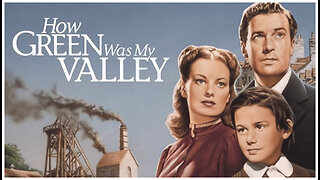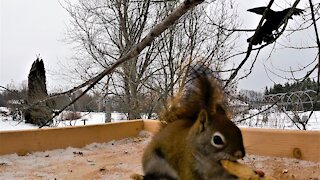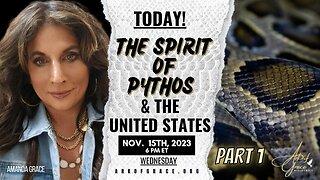The Art of The Peanut Butter Falcon
The Peanut Butter Falcon is an exquisite piece of literary craft and in this video I explore some of the symbolism of the film.
Support the Channel: https://www.patreon.com/thebibleisart
Website: https://www.thebibleisart.com
Email: thisdivineart@gmail.com
Twitter: @johnbhiggins
| Transcription |
The Peanut Butter Falcon is a work of the highest literary and dramatic skill. But because it has been described by many critics as a “feel good movie” I worry that its depth, symbolism, careful attention to detail, surgical development of themes and images might be lost. So in praise of this great film, let’s look at the art of the Peanut Butter Falcon.
Peanut Butter Falcon is a story about Zak, Tyler and Eleanor. Zak is a 22 year old with Down Syndrome who wants to escape his retirement home where has lived since his family abandoned him and to go to a professional wrestling training camp. Tyler, also a young man, fisherman, and thief has a hard time keeping down jobs because he lost his brother one night when he fell asleep at the wheel. After setting fire to a rival’s fisherman's gear, Tyler sets on the road to Florida where he runs into Zak whom Tyler agrees to take to the wrestling school in Florida.
Eleanor works at the retirement home where Zak lives and will chase after after him before joining their journey
Like any good journey narrative, this external journey mirrors the internal journey, the transformation of persons and relationships.
Zak and Tyler as a pair are contrasting as well as complementary, similar and different. That is, they have multiple needs, multiple things that need transformation and one of them they share and one is different.
They’re similar in that they have both lost family and need a new one. But they are different in the following ways. Tyler is self-sufficient/independent and able-bodied, Zak is dependent and has a physical difficulty. And as they go through their journey both their similar needs and different difficulties will be transformed. Tyler’s journey will be a journey out of self-sufficiency and selfishness while Zak’s will be a journey out of his self-perception of deformity, disabled. And they will find this as they create a new family
The first two scenes of the movie open with solitary characters. A shot of Zak and then a shot of Tyler, symbolically communicating their lack of family, their loneliness. This will symbolically change by the end of the movie where the last frame will be Zak, Tyler, and Eleanor, a worker at the retirement home who will run away with them. But let’s not jump too quickly to the end.
When the story begins Tyler is stealing crabs from other fishermans’ traps. The other fisherman confront him, beat him up, and then Tyler sets fire to their equipment. The fisherman see the fire and start to chase after Tyler. Tyler escapes in a boat that unbeknownst to him, Zak hid himself in, looking for anyway to get to his wrestling school.
After some convincing, Tyler finally agrees to drop Zak off at the school on his way to Florida. Notice, Tyler begins thinking two false assumptions: first, that they are on different journeys and second, that he is leading Zak.
The first rule that Tyler establishes is that Zak cannot slow him down. So between geographically leading them and physically being faster, Tyler assumes that he is the independent, strong one, leading a physically slow, Down Syndrome boy down south.
But Tyler doesn’t realize that leading the physical journey pales in comparison to the importance of the internal journey of transformation and in that journey he is the follower.
This inversion of the leader follower relationship between Tyler and Zak is beautifully and symbolically communicated in multiple ways. First, Zak is the first to accept baptism. In response to the offer of baptism Tyler responds that he is more of a “baptism-by-fire-type.” The man performing the baptism says that he doesn’t perform those. But that creates an expectation of baptism by fire to come, and come it does.
Instead of accepting water baptism, Tyler will experience all sorts of baptismal adversity. First, his raft will be burned, baptism by literal fire, then he will physically hit with a metal bar and symbolically killed. I say symbolically killed because the director edited the sequence in the hospital to lead the viewer to believe Tyler was dead.
Zak did not have to endure all that baptismal fire because he didn’t have the self-sufficiency, the selfishness that Tyler had and instead accepted baptism. He acknowledged that he needed cleaning up, whereas Tyler needed to be shown that. Zak was leading Tyler in selflessness.
-
 5:08
5:08
vavaromeo
1 year agoTHE PEANUT BUTTER FALCON (2019)
53 -
 13:57
13:57
thebibleisart
2 years ago $0.01 earnedThe Art of the Riddle | Inception, Plato, and Jonah
276 -
 1:26
1:26
WildCreatures
6 years ago $1,815.15 earnedWild Crow Actually Speaks To Squirrel At Bird Feeder
376K27 -
 1:59:47
1:59:47
🎥 MovieMagic - Classic Old Movies | Film Noir | War | Westerns | Scifi | Musicals | Drama
9 months ago🎥 How Green Was My Valley - 1941 - Walter Pidgeon - 🎥 FULL MOVIE
9642 -
 1:21:55
1:21:55
Lost n Found Films
3 months agoELEPHANT BOY (1937) Sabu, W.E. Holloway, Walter Hudd | Adventure, Drama, Family | COLORIZED
59 -
 1:25
1:25
WildCreatures
3 years ago $4.61 earnedTalking crow greets squirrel with a friendly "hello" at bird feeder
23.1K19 -
 2:00
2:00
The Church of What's Happenin' Now - Prophecy & The Prophetic
8 months agoArtur and Marzena Pawlowski - We Have Already Won, The Enemy Just Doesn't Know It Yet! + Captions
7701 -
 1:00
1:00
Lad From The Woods
11 months agoSunny the Raccoon and her kits eating apples #shorts
13 -
 7:14
7:14
Popcoorn
10 months agoHerr Meets Hare (1945) #popcoorn #cartoon #bugsbunny
81010 -
 57:26
57:26
The Church of What's Happenin' Now - Prophecy & The Prophetic
5 months agoProphet Amanda Grace - The Spirit of Pythos and the United States Part 1 - Captioned
817